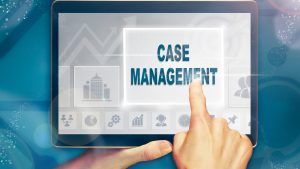A Point of Sale (POS) system is popularly known as a tool that helps businesses in their checkout process. In other words, when a good is purchased, or a service is rendered, a POS system helps in the payment stage to process transactions without errors and provide a receipt. However, there is much more to a POS system. It additionally helps businesses manage their operations by keeping track of inventory, generating insightful reports and more. This is why a POS is a must-have solution for business operators. A company hoping to incorporate a POS system may be confused about where to start. There are different POS systems, from legacy (on-premise) to cloud computing, mobile, self-service, and more. This article will describe a few POS systems popular among small, medium and large-scale businesses.
Legacy (On-Premise) POS
Legacy POS is a traditional POS system found in stores and requires on-site servers to store data. Simply put, a computer with the POS software downloaded is what is regarded as a legacy POS. Since it is restricted to one computer, it is hard for data to be shared and communicate with one another. As a result, legacy POS are also less flexible, as the data inserted into the computer can only be accessed from that specific device. This is why it is alternatively regarded as an ‘on-premise’ POS system (i.e. data limited to the premises). Additionally, a legacy POS is a more expensive choice since there is an upfront maintenance fee and other expenses. It can only be manually updated and includes significant hardware components, which is why they are limited to the store premises. At the same time, however, the legacy system scores well in working offline, controlling data, and ensuring data security and high performance.
Cloud-Based POS
This is the most modern type of POS system. In cloud-based POS, the supplier takes control of the server rather than having a server installed. Hence, any problem that may surface is directly solved by the supplier. This is great for companies that want to focus on managing the company instead of spending time assessing the condition of the server. Since data is uploaded to the cloud, users are not restricted to one device. Instead, authorised personnel can log into the system from anywhere, anytime. This also makes the production of autogenerated reports more accurate and reliable since all data is centralised in one place. In comparison to legacy systems, cloud-based POS are relatively cheaper. It is more scalable and carries out updates automatically on its own. On the negative side, however, it is perceived to put data at risk, although this will depend on company practices, and requires an internet connection for it to operate. They are alternatively known as online POS systems.
Mobile or Tablet POS
A mobile POS system is alternatively called a mPOS or point-of-sale app. It essentially transforms a person’s smart form into a cash register as the POS app is downloaded into it. According to a study carried out by Juniper Research will drive annual mPOS transactions to over 87 billion by 2023. Hence, this form of POS is seen to be on the rise in recent years. It is cheaper, provides the flexibility to move around with it, is cloudbased, user friendly, and is functional offline. A credit or debit card reader will be required to process transactions and can additionally be paired with other physical components, including bar scanners. A tablet POS is essentially very similar, although it provides a bigger screen for efficiency.
Self-service Kiosk POS
As indicated by the term, a self-service kiosk POS allows consumers to make purchases alone without requiring an in-store employee to check out. It is a combination of POS and digital signage. The central aim of such a POS system is to make the checkout process much easier and to utilise manpower for essential tasks. This significantly reduces the waiting time in a store. This is similar to a desktop POS system, although it has more security as transactions are one-sided. Fast food chains popularly opt for this option so that once the order is placed and the food is paid for, the consumer only needs to pick it up. Alternatively, in grocery stores, the self-service kiosk allows the consumer to scan and pay for their items.
Choose The Right POS System
The right POS system out of the above will solely depend on the requirements of your business. Small-scale businesses usually prefer to stick to traditional POS systems, whereas medium or large-scale retailers adopt cloud-based or other POS systems specified above. In essence, most opt to choose a POS system that integrates data across all departments. Whether that is a cloud-based system or a web-based system such as TigernixPOS is up to the organisation. Nevertheless, note that finding a POS system that generates insightful reports with futuristic insights that are reliable, in addition to optimising business processes, is not a feature that is automatically included in all types of POS systems.






